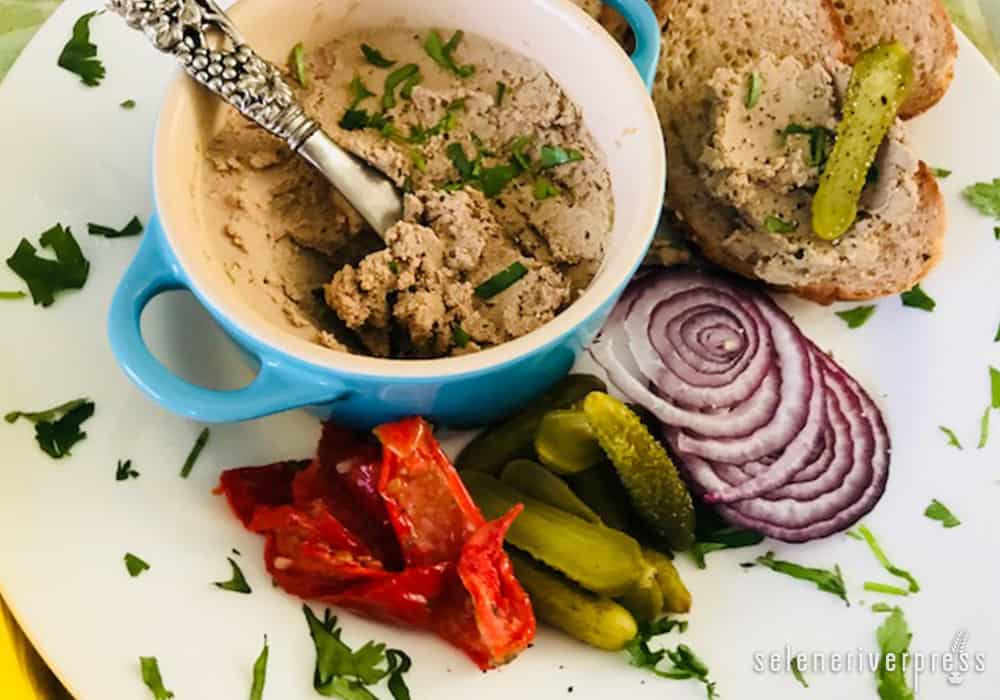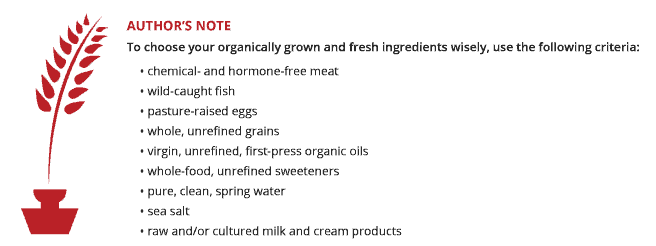Many of us understand the countless advantages we derive from the “odd bits” of the animal. On the surface, organ meats pack a wallop of health benefits, providing us with a plentiful source of easily assimilated, concentrated nutrition. But even beyond that, they have a deeper importance.
“Nose to tail” cuisine has been receiving a lot of exposure lately. Restauranteurs, butchers, and cookbook authors have raised public awareness and inspired the rest of us to maximize every part of the animals we eat. Incorporating the oft-discarded parts is an opportunity for us to connect on a more profound level with our food. To appreciate the animal itself. To get back to our roots and nourish ourselves the way our ancestors did for centuries.
The practice of nose to tail eating reduces food waste, a problem plaguing much of our society. It also contributes to the local economy through support of small farmers. And, in a roundabout way, it even helps the health of the planet.
Our ancestors had it right. They valued the entire animal, and specifically held the organ meats—which were distributed with much care—in high regard. Predators do the same thing with their prey. The organs are always the most valuable part of any hunt. A glimpse of cookbooks up to the late nineteenth century show plenty of recipes for organ meats. But then our society shifted away them. Somewhere along the way, when food scarcity became less of a problem in the modern world, we simply lost a taste for them. In the process, we lost all of the assimilable nutrients that are so vital for building not only a strong foundation of health but also resistance to disease.
Some cultures today still consume organ meats, much as the rest of humanity did in ancient times. Sometimes the whole animal is consumed because food is simply not as abundant, making the nutrients in the organ meats even more valuable. Contrast this to the modern Western diet, where calories abound but nourishment is harder to find.
Organ meats are intensely nutrient dense nuggets that provide high-quality sustenance in small doses. These days, many of us consume them not because we have to but because we want to. Some of us may have grown up eating them, and for these folks, the flavors and textures are familiar and nostalgic. As organ meats gain in popularity, many of us want to return to our origins, reduce the waste associated with modern meat production, and harness the healing powers that these parts have to offer.
I didn’t grow up eating organ meats, so unfortunately I never developed a taste for them. After countless years trying my darnedest to incorporate them into my diet, my taste buds (and furthermore, my textural sensors) still have trouble enjoying organs. I’ve taken to occasionally hiding a frozen piece of liver in my smoothie or eating them in dehydrated capsule form, just to capture at least some of the benefits.
But one thing I actually like is pate. It’s packed with flavors that mute the intense, mineral-heavy taste of liver. It’s smooth and doesn’t need a whole lot of chewing (a bonus for us textural people). And it’s perfect for grazers like me who rarely sit down to eat while working. Pate is a perfect way to incorporate organ meat into my routine.
Liver is nature’s most potent, and certainly most sacred, superfood. An excellent source of high-quality protein, liver contains the most concentrated form of vitamin A, and it’s loaded with abundant B vitamins (particularly B12 and folic acid). It offers an easily assimilated, concentrated form of iron and numerous trace elements such as copper and zinc. The best option for nutrient density is beef or buffalo liver. However, chicken livers are more readily available and have a milder flavor, making them the perfect introduction for newbies. Livers from other animals have their own unique flavors. You can sometimes find them in stores, though they’re not as widely available as beef or chicken livers. You’ll have more luck buying them directly from local farmers or online. As with any meat, but especially organ meats, it’s important to obtain a high-quality product. Whenever possible, look for liver from pasture-raised animals, and make sure it’s free from hormones, antibiotics, and pesticide residue.
Many pate recipes, particularly the traditional French version, have intricate instructions and time-consuming preparation. Though they may produce a more refined final product, there’s a time and place for them, such as special occasions and holidays. This pate is a bit more rustic and more accessible for daily life. It’s about as simple as it gets, and you can make it with just a handful of easily accessible ingredients.
I serve it with raw veggies for a protein-rich snack or meal. Pair it with cultured vegetables or cornichons for a tangy bite and crunch that harmonizes perfectly with the smooth, salty, rich concoction. A crusty bread or some quality crackers are welcome for a more substantial meal.
Luscious Liver Pate
For a fluffy and mousse-like texture, serve the pate immediately, while slightly warm. Or, if desired, you may chill and store it. The chilled pate will have a denser texture.
Makes about 2 cups
Prep time: 10 minutes
Cook time: 10–15 minutes
Ingredients
1 lb. liver (beef, buffalo, chicken, or other animal of your choice), trimmed of sinew and tough bits, cut in large bite-sized pieces
1 small onion, chopped
6 oz. butter, room temperature
2–4 tablespoons heavy cream (additional cream will create a more mousse-like texture)
¼–½ teaspoon cayenne pepper
2–3 teaspoons salt, to taste
½–1 teaspoon cracked black pepper, to taste
Chopped fresh or dry herbs, to taste (optional)
1 teaspoon cognac (optional)
Instructions
- Bring a large pot of generously salted water to a boil. Add chopped liver and reduce heat to a simmer. Simmer liver until almost cooked through, but still slightly pink (about 5–10 minutes, depending on the size of your pieces).
- Drain liver. Let cool slightly, and then pour into the bowl of a food processor. Add all other ingredients. (For the seasonings, start with the smaller amount first, then adjust to taste after pureeing.) Puree until completely smooth. If desired, add seasonings to taste.
- If chilling, spoon pate into small crocks or a glass or ceramic dish of appropriate size. Smooth into all the cracks with a rubber spatula, then smooth the top. Place plastic wrap directly on top of pate to prevent oxidation and a skin from forming. Chill for at least 1 hour, but preferably 3–4. For an extra pretty presentation, before you place in the refrigerator to chill, sprinkle some whole herbs, such sage or parsley leaves, directly atop pate, then cover with a thin layer of melted butter.
Image from Briana Goodall.



